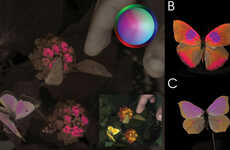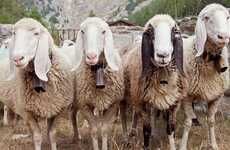
First African Okapi Photos
Sandra Winn — September 11, 2008 — Social Good
On September 10th, the first photos ever of the elusive African Okapi, a.k.a. “Africa’s Unicorn”, have been published online by the Zoological Society of London (ZSL).
Okapi, according to the ZSL site, are very shy. The ZSL partnered up with the Congolese Institute for Nature Conservation (ICCN) in the Democratic Republic of the Congo (DRC), and set up camera traps in Virunga National Park’s Watalinga Forest to capture this rare and beautiful mammal.
The photos above were taken over a two-week time frame and they hope to obtain more of Africa’s Unicorn over the next several weeks. What’s even more exciting is that the photos “...revealed the presence of a previously unknown population on the east side of the River.” As almost everyone is aware, the African Congo is riddled with upheaval and violence so that idea that the Okapi still survives in this area has members of the ZSL and ICCN very excited.
Unfortunately, poaching continues in the Congo and apparently they (poachers) have had more luck in finding Africa’s Unicorn than people who are looking out for them—Okapi meat is sold in the city of Beni. The ZSL and ICCN are concerned that if poaching continues, the Okapi will become extinct in Virunga National Park, one of only three areas known where Okapi live.
Although the Okapi looks more like it would be related to the Zebra due to its zebra-like stripes, or Gazelle due to its facial features, it is actually the closest cousin to the Giraffe.
The ZSL severely needs help funding their Okapi conservation project. Donations can be given via the Read More URL.
Okapi, according to the ZSL site, are very shy. The ZSL partnered up with the Congolese Institute for Nature Conservation (ICCN) in the Democratic Republic of the Congo (DRC), and set up camera traps in Virunga National Park’s Watalinga Forest to capture this rare and beautiful mammal.
The photos above were taken over a two-week time frame and they hope to obtain more of Africa’s Unicorn over the next several weeks. What’s even more exciting is that the photos “...revealed the presence of a previously unknown population on the east side of the River.” As almost everyone is aware, the African Congo is riddled with upheaval and violence so that idea that the Okapi still survives in this area has members of the ZSL and ICCN very excited.
Unfortunately, poaching continues in the Congo and apparently they (poachers) have had more luck in finding Africa’s Unicorn than people who are looking out for them—Okapi meat is sold in the city of Beni. The ZSL and ICCN are concerned that if poaching continues, the Okapi will become extinct in Virunga National Park, one of only three areas known where Okapi live.
Although the Okapi looks more like it would be related to the Zebra due to its zebra-like stripes, or Gazelle due to its facial features, it is actually the closest cousin to the Giraffe.
The ZSL severely needs help funding their Okapi conservation project. Donations can be given via the Read More URL.
Trend Themes
1. Wildlife Conservation - The discovery of a new population of the African Okapi highlights the importance of wildlife conservation efforts, particularly in areas experiencing intense political upheaval.
2. Camera Trap Technology - The use of camera trap technology in capturing images of rare and elusive wildlife presents an opportunity for development of more efficient and accurate monitoring strategies for conservation biology.
3. Eco-tourism - The search for rare and unique wildlife such as the African Okapi could promote eco-tourism in underexplored regions, leading to economic development and greater local investment in conservation efforts.
Industry Implications
1. Wildlife Tourism - The discovery of a new population of the African Okapi presents a valuable opportunity for the wildlife tourism industry, which could utilize the images to promote conservation and attract tourists to the under-explored region.
2. Camera Trap Manufacturing - The growing demand for camera trap technology presents opportunities for companies to acquire financing and to develop innovative, user-friendly, and cost-effective products to meet the needs of wildlife conservation science.
3. Environmental Philanthropy - The need for increased funding for wildlife conservation, as exemplified by the ZSL's Okapi conservation project, presents opportunities and incentives for philanthropic individuals and organizations to support environmental causes.
4.6
Score
Popularity
Activity
Freshness























